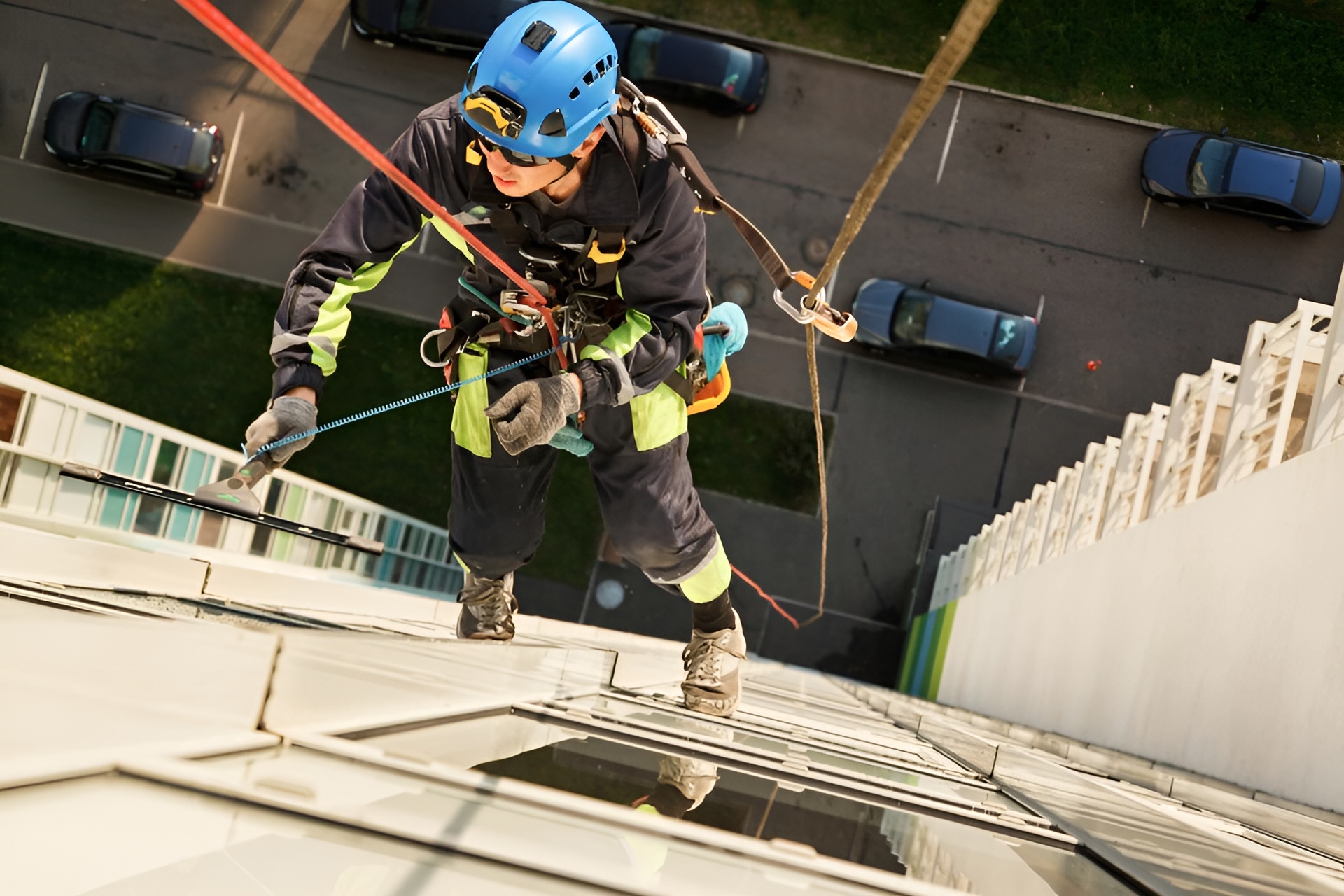9 Reasons Why Vertical Rescue Training is Essential for Emergency Situations

Vertical rescue training isn’t just a skill – it’s an imperative. With the varied terrains and architectural structures in our region, having rescue expertise has never been more crucial.
#1 Safety in Varied Terrains
When you think of our diverse landscapes, from sharp cliffs to towering skyscrapers, it’s clear that emergency situations could arise anywhere. The unique challenges these settings bring during emergencies highlight the need for specialised vertical rescue techniques. This training ensures that rescuers can navigate and conduct operations efficiently, regardless of the environment they’re in.
#2 Enhancing Professional Skill Set
For anyone in the emergency response sector, being proficient in vertical rescue isn’t just an added bonus; it’s a necessity. It enhances the overall efficiency of emergency teams, making them better equipped to handle crises and save lives.
#3 Increasing Speed of Response
Time is of the essence in rescue missions. With vertical training, responders are better equipped to reach victims swiftly, even in the most challenging terrains. This speed could mean the difference between life and death.
#4 Improving Victim Comfort and Safety
Beyond the immediate rescue, ensuring the well-being of victims during operations is paramount. Vertical training teaches techniques that prioritise the physical and psychological well-being of those in distress, making the rescue process as smooth and trauma-free as possible.
#5 Equipment Familiarity and Mastery
Equipment can be a rescuer’s best friend or worst enemy. Knowing the ins and outs of the tools at their disposal is vital. This knowledge ensures they can function optimally and address any tool-related challenges head-on.
#6 Effective Communication during Rescue Missions
Clear, concise communication is the backbone of any successful rescue operation. High-stress situations can muddle transmissions, leading to mistakes. But with the right training, teams can overcome these hurdles, ensuring everyone’s on the same page.
#7 Preparedness for Unpredictable Scenarios
Emergencies are, by nature, unpredictable. While we can’t foresee every potential situation, training provides the foundation to handle various challenges. It arms rescuers with the knowledge and adaptability to approach each mission with confidence.
#8 Enhancing Team Coordination and Morale
A well-coordinated team can make all the difference. Vertical rescue training fosters unity and understanding among team members, ensuring everyone knows their role. Plus, mastering these skills can give the entire team a morale boost, making them feel more equipped and empowered.
#9 Meeting Safety and Compliance Standards
Safety regulations exist for a reason: to protect everyone involved. Vertical rescue training ensures teams are up to par with these standards, safeguarding the well-being of both rescuers and victims while reducing potential legal risks.
Conclusion
Vertical rescue training isn’t just about learning techniques; it’s about mastering the art of saving lives in challenging scenarios. Whether faced with a towering structure or a sheer cliff, this training prepares emergency teams to act swiftly, efficiently, and safely. And for those seeking top-notch training, Vertical Horizonz in Brendale stands as a beacon, leading the way in producing the finest rescuers in the region.
1. What are the three levels of rescue training?
The three levels of rescue training generally consist of:
- Awareness Level: This is the introductory phase where individuals learn to identify potential hazards and are trained to call the appropriate rescue professionals without getting directly involved in the rescue.
- Operational Level: Here, individuals gain skills to participate in rescues, including using protective equipment and executing specific rescue tasks, though they don’t lead the operations.
- Technician Level: At this highest level, trainees are equipped with advanced skills, enabling them to lead and coordinate rescue operations, ensuring safety and efficiency.
2. What is high angle rescue training?
High angle rescue training focuses on teaching individuals to safely execute rescues in steep or vertical environments, such as cliffs, tall buildings, or construction sites. This training includes mastering the use of ropes, harnesses, pulleys, and other essential equipment to navigate and conduct rescues in elevated or challenging terrains.
3. What are the 4 types of rescue?
The four primary types of rescue include:
- Low Angle: Operations on slopes typically less than 35 degrees, often without the use of specialised equipment.
- High Angle: Rescues involving steep terrains or vertical situations, requiring ropes and advanced techniques.
- Confined Space: Rescues in restricted areas like tunnels, tanks, or pipelines where movement is limited.
- Water and Swiftwater: Operations in aquatic environments, from calm waters to fast-flowing currents, necessitating water navigation skills.
4. What are the 5 rescue techniques?
The five prominent rescue techniques are:
- Rope Systems: Utilising ropes for anchor, hauling, or belaying in high or low angle rescues.
- Patient Packaging: Properly securing and preparing the victim for safe transport during a rescue.
- Mechanical Advantages: Using pulleys and other devices to gain leverage in lifting or pulling during a rescue.
- Tethering: Anchoring rescuers or equipment securely to prevent falls or drifting.
- Anchoring: Setting up reliable fixed points, typically for rope systems, ensuring the safety of the operations.
5. What is the three rescuer technique?
The three rescuer technique is a method typically employed in water rescues. One rescuer stabilises and holds the victim’s head above water, the second assists by securing the victim’s torso, and the third manages the victim’s legs, ensuring they are streamlined. This coordinated effort ensures swift and safe retrieval of the victim from the water.
6. What are the six stages of rescue?
The six stages of rescue are:
- Size-Up: Assessing the situation, risks, and identifying potential hazards.
- Stabilisation: Ensuring the scene is safe for rescuers and victims by controlling hazards.
- Access: Navigating to the victim using the safest and quickest route.
- Patient Care: Providing immediate medical attention or comfort to the victim.
- Disentanglement: Removing obstructions or freeing the victim from constraints.
- Removal: Safely extracting and transporting the victim away from the scene.
7. What are the 7 phases of rescue operation?
The seven phases of a rescue operation include:
- Reconnaissance: Initial survey of the area to gather vital information.
- Planning: Devising a strategy based on the reconnaissance findings.
- Team Assembly: Gathering the necessary personnel and assigning roles.
- Equipment Preparation: Ensuring all tools are ready and appropriate for the mission.
- Access and Stabilisation: Reaching the victim and making the environment as safe as possible.
- Extrication: Freeing the victim from their predicament.
- Evacuation: Transporting the victim to safety or a medical facility.
-
6 Career Advancements Enabled by Completing a White Card Training Course
November 06, 2023
-
7 Career Opportunities Unlocked by a Working at Heights Certification
October 24, 2023
-
7 High-Paying Jobs You Can Get with a GWO Training Certification
October 20, 2023
-
Top 7 Career Advancements After Completing a High Pressure Water Jetting Course
October 18, 2023
-
5 Essential Techniques Taught in High Pressure Water Jetting Courses
October 18, 2023
-
7 Career Opportunities after Completing Vacuum Loading Training
October 17, 2023







